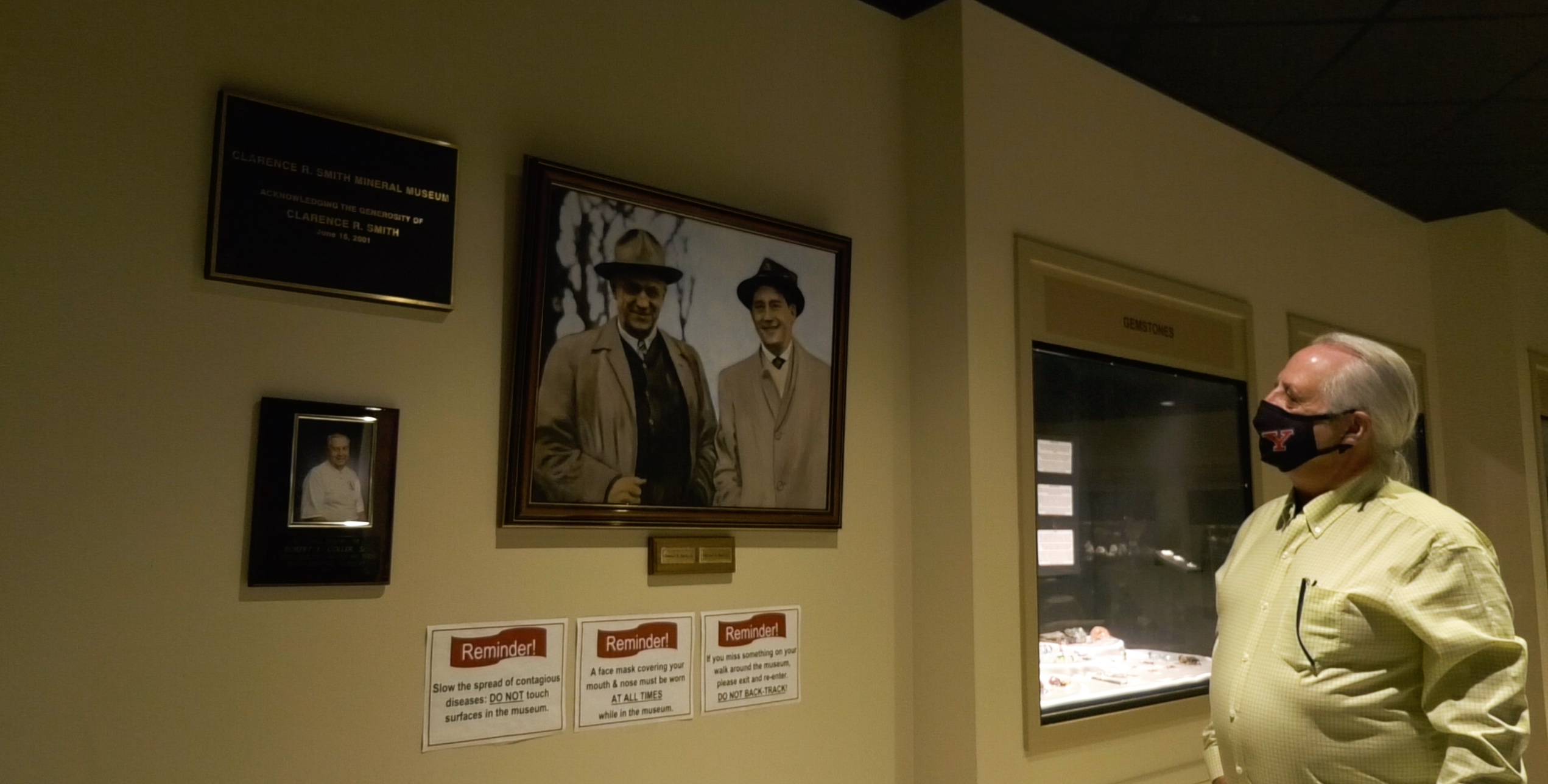By Kelcey Norris
Students in the Youngstown State University College of Science, Technology, Engineering and Math share space with a museum full of historical mineral specimens from around the world.
The Clarence R. Smith Mineral Museum in Moser Hall honors the legacy of the Smith family with its many display cases full of gems and rocks the father-son duo discovered.
Jeffrey Dick, a professor of applied geology at YSU, serves as its director, overseeing the operations of the museum.
“The museum was established in 2000,” he said. “It was a gift from Clarence R. Smith Jr. in memory of his father, Clarence R. Smith Sr. The Smith family was rather extraordinary in their love for geology, minerals, fossils and collected beautiful specimen from around the world. What you see in the museum here is just part of their collection.”
Founder of the museum Clarence R. “Sonny” Smith Jr. died April 13 of this year, leaving behind a legacy of major philanthropy in the Youngstown area.
He and his father were instrumental in collecting, maintaining and donating the vast collection the jewelry store-owning family had amassed.
“It’s just a wonderful asset to have here at the university and in the geology program,” Dick said. “Geology students get involved in lab assignments based on what we have here in the museum, for geology students and in our introductory non major courses as well. Some of our geology students are employed by the museum to take care of the curation.”
Some highlights to check out at the museum include Smith’s favorite and the most rare specimen — a piece of yellow, black and “snowball-looking” adomite — featured in the front glass window of the mineral museum.
“That was Clarence Smith Sr.’s favorite mineral, and it’s extremely rare,” Dick said. “You just don’t find it that often and you’ll never find it that nice.”
“When the donation was made to the geology department, it was rumored that … the Carnegie Museum over in Pittsburgh was a little bit upset because they were anticipating the donation would be given to them,” Dick said. “That’s what I heard and just shows what a nice collection it is.”
There is also a curation of fossilized dinosaur remains and footprints that Dick said always gets attention during tours.
“We have an absolutely gorgeous mastodon tusk that’s a piece of paleontology — a fossil — but it’s also an art piece. It’s been intricately carved with a scene, a landscape, of the Serengeti Plain with trees and animals and everything,” Dick said.
Many of the visitors to the museum are middle and high school students, but they haven’t been able to visit recently due to safety concerns. The museum has started giving away mineral kits as an educational supplement, which are baggies full of minerals and rocks to take home. They’re free while supplies last and contain 15 small, unique specimens.
Due to the COVID-19 pandemic, walk-in visitors to the museum are not accepted at this time. Anyone interested in setting up a small group tour of the mineral museum is encouraged to contact Jeff Dick at jcdick@ysu.edu
